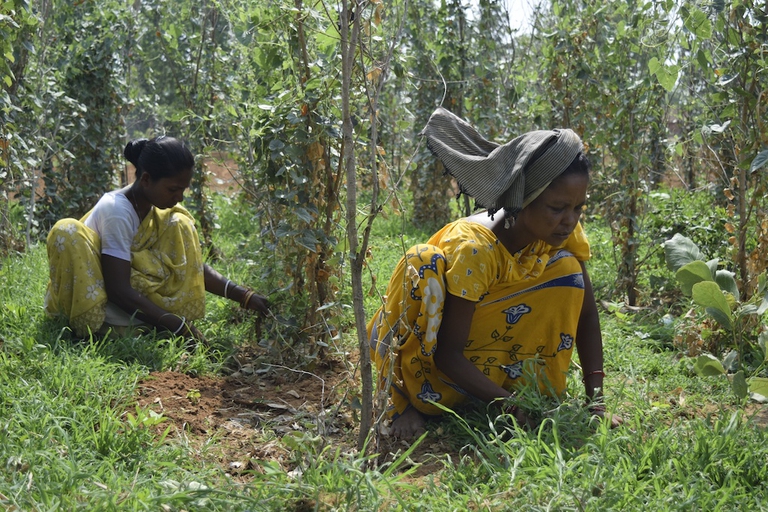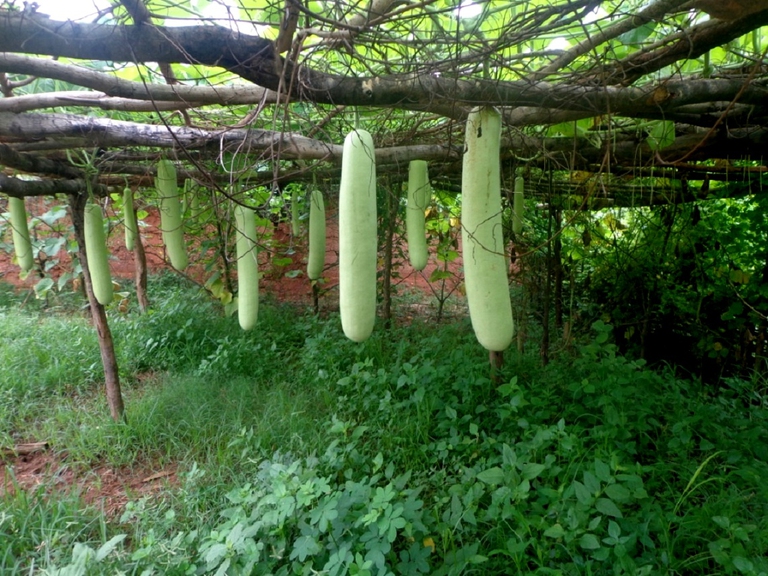
Factory farming conditions and antibiotic-resistant pathogens emerging as a result of them pose an existential threat to humans in the form of zoonotic diseases. Why it’s time to produce and consume food more thoughtfully.
The future scenario of the global food system is a matter of worry for experts and the scientific community because of the vulnerability of agriculture to the impacts of global warming. It is estimated that agricultural productivity will decline 15 to 30 per cent by 2080 in the developing regions most subject to climate change – Africa, South Asia and Central America. For some
The future scenario of the global food system is a matter of worry for experts and the scientific community because of the vulnerability of agriculture to the impacts of global warming. It is estimated that agricultural productivity will decline 15 to 30 per cent by 2080 in the developing regions most subject to climate change – Africa, South Asia and Central America. For some countries in these areas total agricultural production could decline by up to half according to the United Nations Conference on Trade and Development (UNCTAD) report Wake Up Before It Is Too Late.
To avoid this situation, the world needs a paradigm shift from conventional, monoculture-based and high external input dependent industrial production towards mosaics of sustainable, regenerative production systems, urges the report.
Unaware of such reports and expert views, tribal women of the Sundargarh district of eastern India’s Odisha state have chosen to produce safe and nutritious food, achieving food security and a better livelihood through organic farming.
This is in respect of their age-old agrarian tradition. Thousands of hectares of farmland in the district have never consumed any fertiliser that is either synthetic or inorganic in nature. “All we use is organic. Even the seeds are of indigenous varieties produced in our own farms,” says Nirmala Barla, a passionate farmer from Brahmanmara village.
Read more: India, how indigenous farmers are developing climate resilient agriculture
Such traditions have changed the lives of thousands such farmers. They only require some modifications for better production, says Nata Kishore Mishra, chief functionary of the Centre for Integrated Rural and Tribal Development (CIRTD), a local non-profit working to popularise organic farming and promote indigenous seed banks created by farmers. “Earlier, we used to apply raw cow dung or compost to the soil and sow the seeds in the fields. The production was too little to fulfil our family needs,” says 35-year-old woman farmer Soharmati Topno.
“While suggesting the farmers go for multi-cropping instead of traditional monoculture, we facilitate convergence between the farmers and experts like Subhash Palekar, the agricultural scientist famous for his idea of zero budget natural farming,” Mishra says.
The model of zero budget natural farming entails producing crops at zero or near zero cost. Palekar has trained the farmers on how to prepare organic fertilisers using cow dung, cow urine, jaggery (a type of brown sugar made in India) and lentil powder, as well as organic pesticides using the leaves of neem (Azadirachta indica), karanja (Pongamia pinnata) and calotropis along with garlic, jaggery, cow dung and cow urine in different compositions. The farmers, however, use molasses rich mahua (a tropical tree) instead of jaggery as the former is available in the vicinity and nearby forest.
Read more: Sikkim, the Indian state becomes the first to farm 100% organic
Multi-cropping and organic fertilisers have transformed the practice of traditional subsistence agriculture into a dependable livelihood option for more than 2000 tribal farmers applying natural farming on more than 1200 hectares of land. “My small piece of agricultural land is sufficient now to feed my family year-round while meeting expenses for the education of my two children,” says Golapi Sa, 40, of Patkijore village who farms a little less than a hectare of land.
The best part of the story is that the tribal women prefer growing food crops rather than cash crops because their priority is to meet their family’s nutritional requirements. They’ve formed groups bringing together landholders and the landless poor on the basis of equal sharing: patches of land are leased out for organic farming.
Members of the Oliva Women Farmers Collective have received several accolades for growing about 12 crops – brinjal, chilly, onion, tomato, cow pea, watermelon, beans, bitter gourd, ladies finger, sunflower, pumpkin and leafy vegetables – in a single season by dedicating a row to each crop.
In order to promote traditional organic farming, the government of India has created the Paramparik Krishi Vikash Yojana programme. Under the scheme, over 600 extra hectares of land will be farmed organically by 1370 farmers from 30 clusters of tribal hamlets starting from this monsoon crop season, which usually spans from June to October. In this way, tribal farmers have set another example justifying the urge to shift from intensive to organic agriculture.
Siamo anche su WhatsApp. Segui il canale ufficiale LifeGate per restare aggiornata, aggiornato sulle ultime notizie e sulle nostre attività.
![]()
Quest'opera è distribuita con Licenza Creative Commons Attribuzione - Non commerciale - Non opere derivate 4.0 Internazionale.
Factory farming conditions and antibiotic-resistant pathogens emerging as a result of them pose an existential threat to humans in the form of zoonotic diseases. Why it’s time to produce and consume food more thoughtfully.
The world of cinema recognises the link between food choices and the climate crisis by offering vegan menus for awards season events, including at the most important of them all: the Oscars.
Let’s look at the reasons behind the growth of veganism in India, as a small yet vocal section of the population turns towards this diet and lifestyle in the largest milk producing country in the world.
by Jeffrey Y. Campbell, Manager of the Forest and Farm Facility at FAO In the Ecuadorian Amazon, Kichwa farmers grow dozens of products on tiny parcels of land. Their lands hum with biodiversity, yielding nutritious foods that have sustained families for generations. Wandering among fruit and nut trees and crops, these indigenous agroforesters fill their baskets
Mint has many health benefits, but in food it’s often accompanied by artificial green colourings. Instead, Galatea has created a green mint ice cream in a completely natural way.
We’re talking about Galatea, a company that produces semi-finished products for artisanal ice creams using high quality ingredients, natural colouring, excluding thickeners and hydrogenated fats, respecting the environment and supporting the less fortunate.
The mad rush to fake food, like fake meat made with genetically-modified soy, ignores the importance of the diversity of our foods and culinary cultures. It’s a recipe to accelerate the destruction of the Planet and our health.
Like with all foods, the quality of an ice cream can be discerned by reading its label. An expert explains how to do this, and tells us how their company steers clear of chemicals, using only natural ingredients to produce an excellent and “free” ice cream.
Quality ingredients, no artificial colouring and hydrogenated fats. These are the main features of a great ice cream. But what makes an ice cream parlour “good”, i.e. sustainable?










